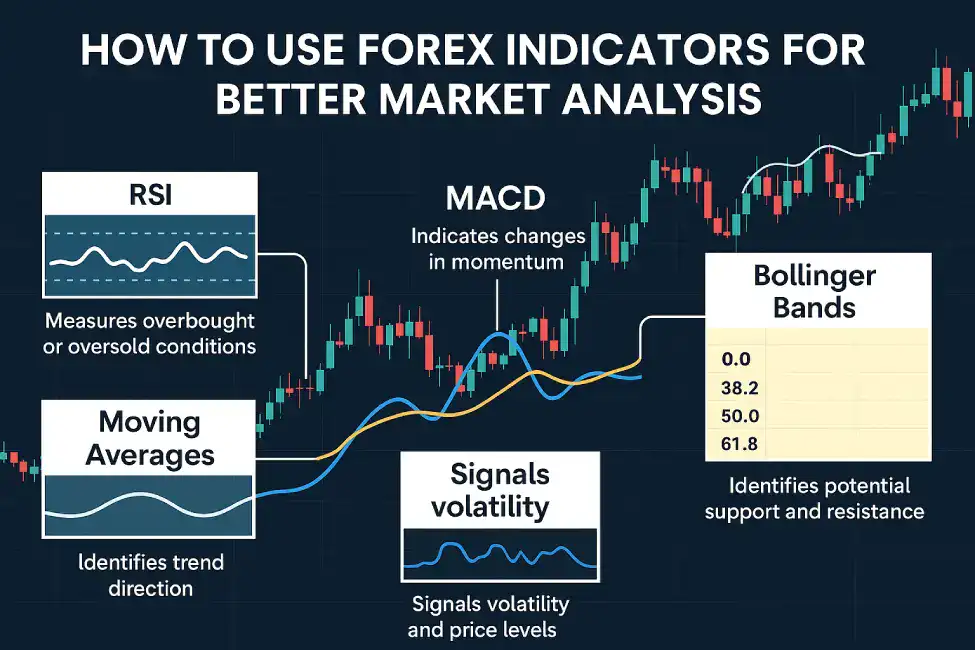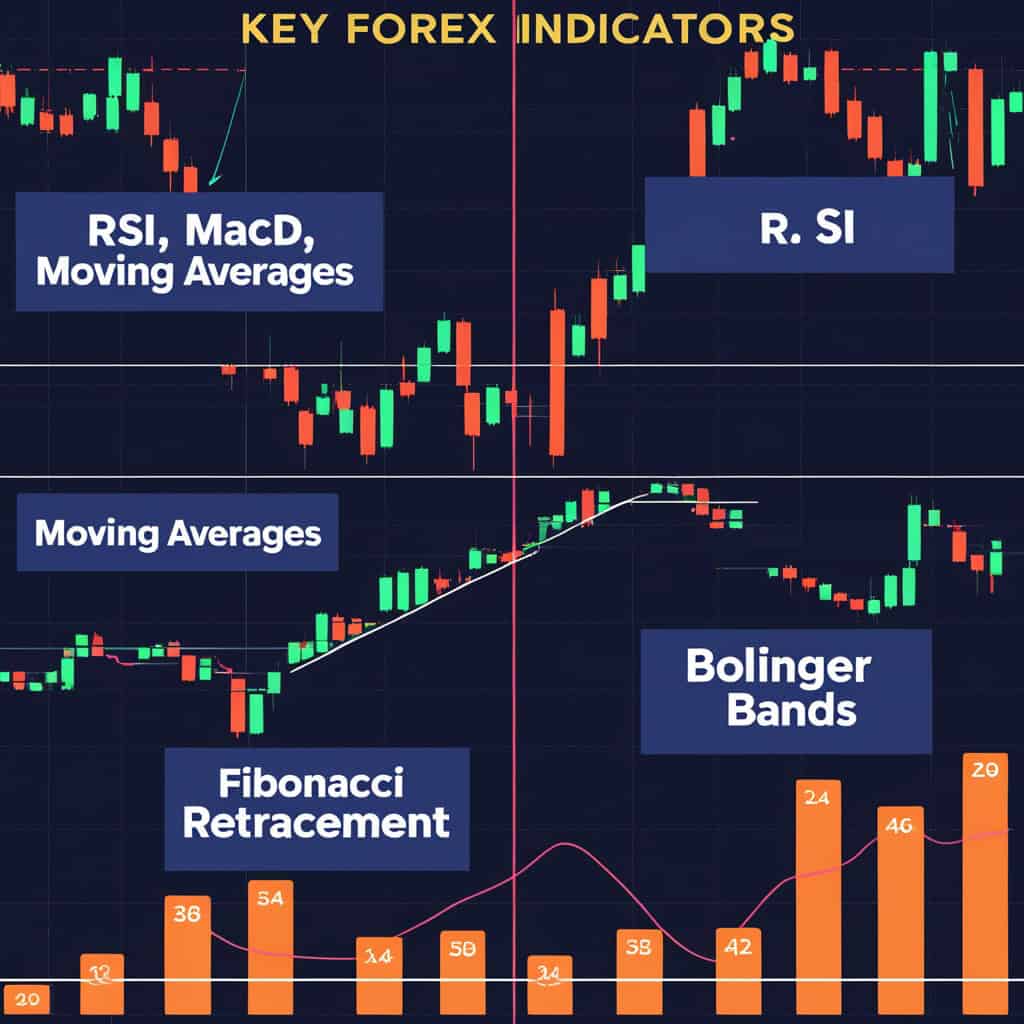Mastering Forex trading requires understanding the tools that can help you make informed decisions—and Forex indicators are among the most essential. From trend detection to precise entry and exit points, indicators serve as a compass in the fast-moving Forex market. Whether you’re a beginner learning the ropes or an experienced trader refining your strategy, using Forex indicators effectively can dramatically improve your market analysis and performance.
In this comprehensive guide, we’ll walk you through everything you need to know about Forex indicators, from the basics to advanced strategies. We’ll also highlight some of the top tools, platforms, and products to help you become a more confident trader.
Explore this in-depth article powered by GregForex.com, your one-stop hub for expert insights, trusted trading tools, and Forex indicator bundles. For a broader look at must-have tools, check out our guide on the Best Tools for Forex Trading.
What Are Forex Indicators?
Definition and Role in Forex Trading
Forex indicators are mathematical calculations based on price, volume, or open interest of a currency pair. They provide signals to help traders determine when to enter or exit a trade. Most indicators are used in technical analysis and serve to simplify raw data, making it easier to identify patterns and potential trading opportunities.
The primary role of Forex indicators is to give traders a systematic approach to analyzing the market. By using indicators, traders reduce emotional decision-making and base their trades on quantifiable data. This method helps improve consistency and risk management.
Check our blog post How to manage risk in forex trading for more insights.
Types of Forex Indicators (Leading vs Lagging)
Forex indicators fall into two main categories:
- Leading Indicators: These provide early signals about future price movements. They’re useful for anticipating reversals or new trends. Examples include RSI and the Stochastic Oscillator.
- Lagging Indicators: These follow market trends and provide confirmation. They are more reliable during established trends. Examples include Moving Averages and MACD.
Both types of indicators have their strengths, and many traders combine them to create a balanced strategy.
Why Are Forex Indicators Important for Traders?
Predicting Market Movements
Forex indicators are designed to help traders predict where the market might go next. For example, a rising RSI might suggest that a currency pair is overbought and due for a correction. Indicators like Bollinger Bands can signal volatility, hinting at potential price breakouts.
While no indicator can predict the future with 100% accuracy, using a combination of indicators can provide high-probability setups, especially when they align with broader market conditions.
Enhancing Entry and Exit Strategies
One of the biggest challenges in Forex trading is knowing when to get in and out of a trade. Indicators provide clear visual cues to help make these decisions. For instance, a crossover of the MACD line can signal a potential trend reversal, while Fibonacci retracement levels can help set exit targets.
Using indicators to refine your entry and exit points can significantly improve your trading accuracy and reduce losses.
Top Forex Indicators You Should Know
Moving Averages (MA)
Moving Averages smooth out price data to reveal trends over time. They are easy to use and effective for identifying trend directions. Common types include:
- Simple Moving Average (SMA): The average closing price over a specific period.
- Exponential Moving Average (EMA): Gives more weight to recent prices, making it more responsive to new data.
Relative Strength Index (RSI)
The RSI measures the magnitude of recent price changes to evaluate overbought or oversold conditions. An RSI above 70 suggests a pair is overbought; below 30 suggests it’s oversold. RSI is particularly useful for momentum-based strategies.
Moving Average Convergence Divergence (MACD)
MACD shows the relationship between two EMAs and includes a signal line to identify buy and sell signals. A MACD crossover, when the MACD line crosses above or below the signal line, is a popular trigger among traders.
Bollinger Bands
Bollinger Bands consist of a middle band (SMA) and two outer bands that measure volatility. When prices break above or below the bands, it signals potential overbought or oversold conditions.
Fibonacci Retracement
Fibonacci retracement levels are used to identify potential reversal zones based on the Fibonacci sequence. Key levels include 38.2%, 50%, and 61.8%, which often align with support and resistance levels.
Stochastic Oscillator
This momentum indicator compares a particular closing price to a range of prices over a set period. Readings above 80 indicate overbought conditions, while below 20 indicates oversold.

How to Use Forex Indicators in Technical Analysis
Combining Multiple Indicators
To increase the accuracy of your signals, it’s often wise to combine two or more indicators. For example, use a trend indicator like EMA along with a momentum indicator like RSI. This helps confirm the validity of signals.
Avoiding Signal Conflicts
Avoid using indicators that provide the same type of data, as this can create redundancy. Instead, use a mix of leading and lagging indicators for better balance.
Example: MA + RSI Strategy
Use a 50-day MA to determine the trend direction and the RSI to identify potential overbought or oversold levels. This combination offers both trend-following and momentum insights.
Example: MACD + Fibonacci for Trend Reversals
Use MACD divergence to spot potential reversals, and apply Fibonacci retracement levels to time entries and exits around support/resistance zones.
Tips for Using Forex Indicators Effectively
Avoid Overcomplicating Your Chart
A common mistake among traders is overloading their charts with indicators. Keep it simple. Use only the indicators that add real value to your decision-making.
Backtesting Your Indicator Strategy
Before going live, backtest your strategy using platforms like MetaTrader 5 or TradingView. Backtesting helps you understand how your strategy performs over historical data.
Understanding Market Conditions (Trending vs Ranging)
Some indicators work better in trending markets (e.g., Moving Averages), while others excel in ranging conditions (e.g., RSI). Adjust your strategy based on the current market context.
Common Mistakes When Using Forex Indicators
Relying Too Heavily on One Indicator
No single indicator is foolproof. Relying solely on one can lead to inaccurate predictions and poor trades. Instead, build a strategy that uses multiple confirming indicators.
Ignoring Fundamental Analysis
While technical indicators are powerful, they should not be used in isolation. Economic news, interest rate decisions, and geopolitical events can override technical setups. Stay informed with sites like Forex Factory.
Using Indicators Without a Trading Plan
Indicators should be part of a well-defined trading plan that includes entry/exit rules, risk management, and position sizing. Check our blog post Why You Need a Trading Plan for more insights.
Best Forex Indicator Combinations for Day Trading
RSI + MACD for Momentum
This duo is ideal for short-term trades. RSI highlights overbought/oversold conditions, while MACD confirms the trend direction.
EMA + Bollinger Bands for Breakouts
Combine the speed of EMA with the volatility tracking of Bollinger Bands to catch breakouts and price surges.
Forex Indicators for Beginners
Simple Moving Average (SMA)
SMA is great for identifying long-term trends. It’s easy to understand and forms the basis for more advanced indicators.
RSI for Easy Signal Recognition
With clear thresholds (30/70), RSI is intuitive and excellent for beginners. Use it to avoid chasing trades and time your entries more effectively.
Explore our Starter Indicator Kit designed specifically for new traders.
Advanced Indicator Strategies for Experienced Traders
Ichimoku Cloud Analysis
Ichimoku offers a comprehensive view of support, resistance, momentum, and trend direction. It may seem complex at first, but it’s incredibly powerful when mastered.
Volume-Based Indicators (OBV, Volume Oscillator)
Volume indicators help verify the strength behind price moves. When price and volume rise together, the move is more likely to sustain. Learn more in our blog: How Volume Confirms Price Action.

Tools and Platforms to Use Forex Indicators
MetaTrader 4/5
MetaTrader platforms offer robust tools for indicator-based trading, including automated strategies (EAs). You can access our expert tools on MetaTrader 5.
TradingView
This web-based platform offers high-quality charts, community indicators, and backtesting capabilities. It’s perfect for traders who want flexibility and speed.
Forex Factory
This news and analysis site complements technical trading by offering real-time updates on fundamental events.
Conclusion: Mastering Forex Indicators for Better Trades
Forex indicators are essential tools that every trader should understand and use wisely. From basic tools like SMA and RSI to complex strategies involving Ichimoku and MACD, mastering these indicators can give you a competitive edge in the market.
Just remember: indicators are tools, not guarantees. Always use them within the context of a solid trading plan and never ignore the bigger picture, including market sentiment and economic news.
Ready to elevate your trading journey? Visit GregForex.com to browse our curated Forex tools, advanced strategies, and best-selling products like the Ultimate Forex Indicator Bundle or MACD Pro Signal Scanner. Trade smarter, not harder.




